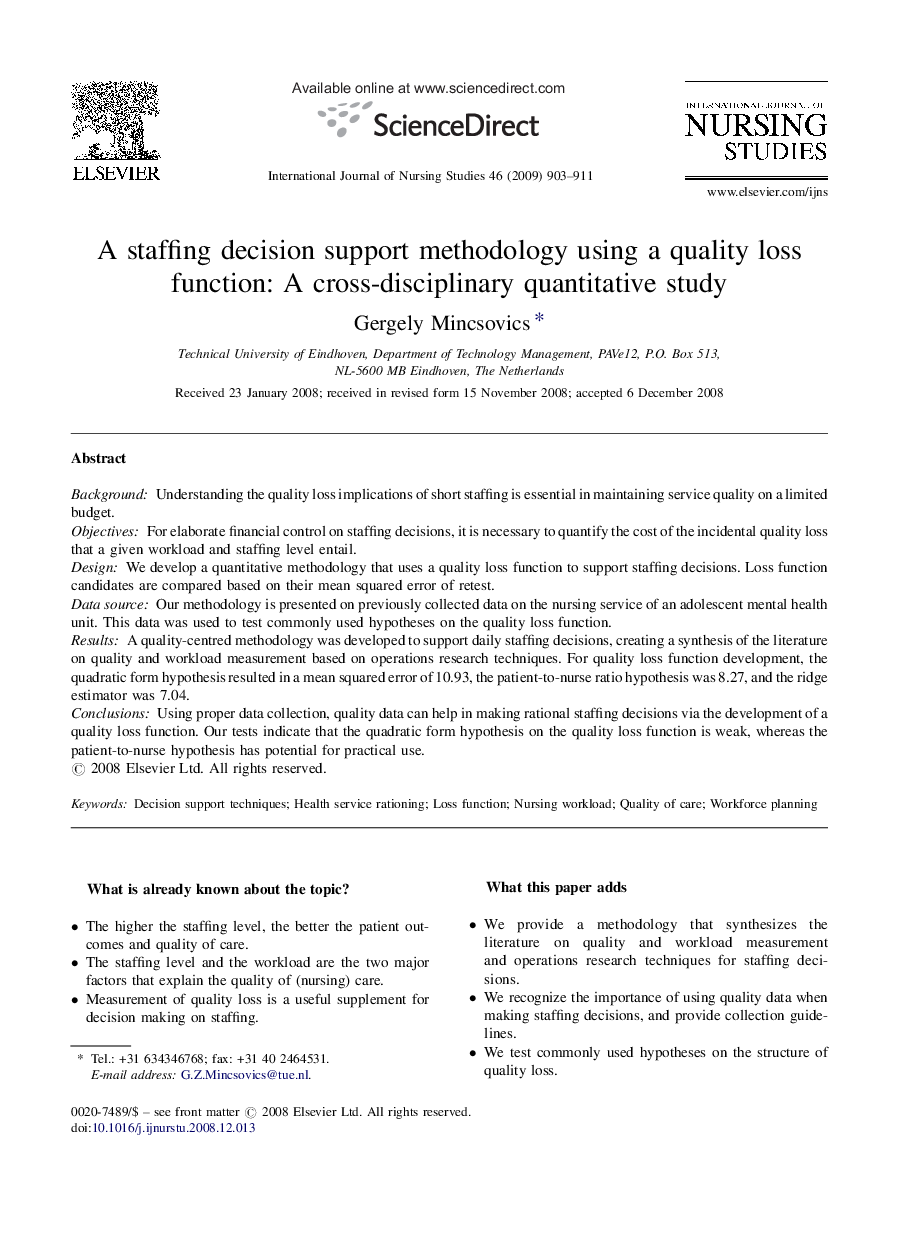| Article ID | Journal | Published Year | Pages | File Type |
|---|---|---|---|---|
| 1077099 | International Journal of Nursing Studies | 2009 | 9 Pages |
BackgroundUnderstanding the quality loss implications of short staffing is essential in maintaining service quality on a limited budget.ObjectivesFor elaborate financial control on staffing decisions, it is necessary to quantify the cost of the incidental quality loss that a given workload and staffing level entail.DesignWe develop a quantitative methodology that uses a quality loss function to support staffing decisions. Loss function candidates are compared based on their mean squared error of retest.Data sourceOur methodology is presented on previously collected data on the nursing service of an adolescent mental health unit. This data was used to test commonly used hypotheses on the quality loss function.ResultsA quality-centred methodology was developed to support daily staffing decisions, creating a synthesis of the literature on quality and workload measurement based on operations research techniques. For quality loss function development, the quadratic form hypothesis resulted in a mean squared error of 10.93, the patient-to-nurse ratio hypothesis was 8.27, and the ridge estimator was 7.04.ConclusionsUsing proper data collection, quality data can help in making rational staffing decisions via the development of a quality loss function. Our tests indicate that the quadratic form hypothesis on the quality loss function is weak, whereas the patient-to-nurse hypothesis has potential for practical use.
